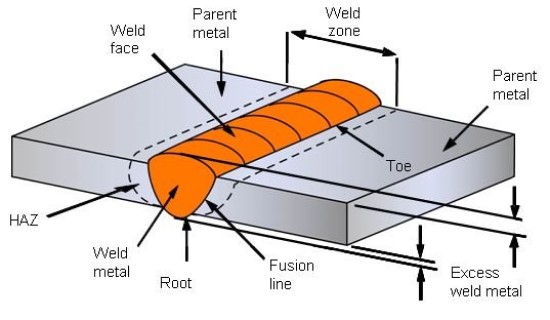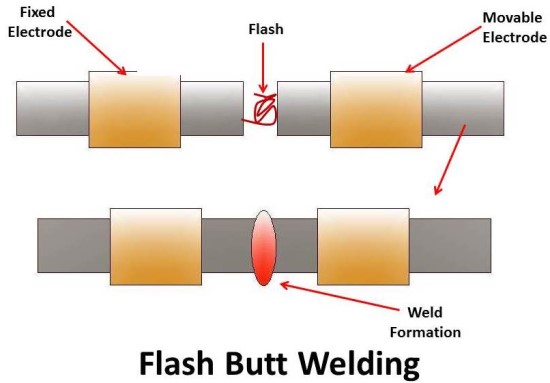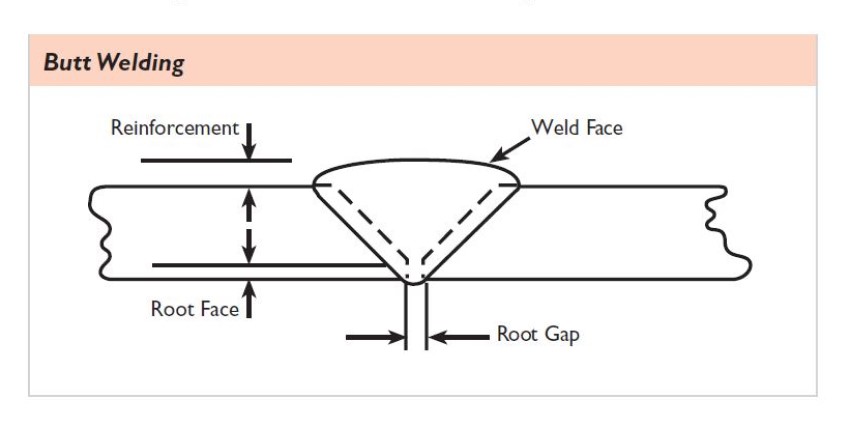Butt joint welding is a popular welding process for joining two pieces of metal together. The butt joint is the most common type of joint and is used in applications such as car bodywork, appliance repairs, and steel construction. This type of welding has several advantages over other welding methods. Let weldfaq share these with you!
What is Butt Joint Welding?
Butt joint welding is a type of welding where two pieces of metal or plastic are joined together along a common edge in a way that forms a flush surface. The welding process involves heating the edges of the two pieces until they melt and then pressing them together to create a permanent joint.
Butt Joint Welding Process
In the welding process, the edges of two plates or surfaces are brought together and then welded to deposit the weld metal. This type of joint is called a butt joint, and it provides strong welding joints with high strength compared to fillet weld or other types of joint.
The process of welding a butt joint involves several steps. Firstly, the metal pieces to be joined must be cleaned and prepared for welding. This includes removing any dirt, rust, or paint from the metal surface. Secondly, tack welds are made by striking an arc and letting it sit for a few seconds. This is done to hold the two pieces of metal together before the actual welding process begins.
Next, the metal is flipped over to be welded, and an arc is struck to create the root pass, which is the first and deepest pass on the weld. The root pass forms the foundation of the weld and must be done carefully to ensure the strength and durability of the joint. The welding process continues with several more passes until the joint is fully welded.

Types of Butt Joint Welding
According to the American Welding Society, there are five types of joints: butt, corner, edge, lap, and tee. The butt joint is the most common type of joint and can be welded using arc welding, resistance welding, and high energy beam welding, and can even be part of a brazing operation.
The square groove butt weld is the simplest joint design and is used with metal up to 3/16 in thickness, and when the weld joint won’t sustain constant load. The joint may be snugly fitted between the workpieces or may have a root hole. However, the root opening may be necessary, depending on the metal and filler material.
Advantages of Butt Joint Welding
Butt joint welding offers several advantages over other types of welding joints. One of the biggest advantages of butt joint welding is its strength. The joint is highly secure because both pieces of metal are joined together in a single welded seam, making it much stronger than other types of welding joints such as lap joints or fillet welds.
Another advantage of butt joint welding is that it is a simple and versatile joint design. The joint is formed by placing two pieces of metal end-to-end and welding along the join. Importantly, in a butt joint, the surfaces of the workpieces being joined are on the same plane, and weld metal remains within the planes of the joint, making it a low-profile and aesthetically pleasing option.
Square groove butt welds, in particular, are the simplest type of butt joint design and are commonly used with metal up to 3/16 in. thickness when the joint won’t sustain a constant load. However, the root opening may be necessary depending on the metal and filler material used.
Uses for Butt Joint Welding
Butt joint welding is one of the most common types of welding techniques used in various industries such as automotive and aerospace manufacturing, shipbuilding, construction, and home welding projects. Butt joint welding is versatile and offers high strength and security because both pieces of metal are joined together in a single welded seam.

It is the most common welding joint used in the construction of steel structures, frames, and machinery. The joint is simple to produce and is a cost-effective way of producing strong and secure welded structures.
Frequently asked questions (Weld FAQ)
What materials are suitable for butt joint welding?
Butt joint welding can be used with a variety of materials, including steel, aluminum, and stainless steel. The thickness of the materials being welded and the filler material used will depend on the specific application.
What are the advantages of butt joint welding?
One of the biggest advantages of butt joint welding is that it is incredibly strong. The joint is very secure because both pieces of metal are joined together in a single welded seam, making it stronger than other types of welding joints such as lap joints or fillet welds.
What are some disadvantages of butt joint welding?
One disadvantage of butt joint welding is that it requires precise alignment of the workpieces being joined. Any misalignment can lead to a weak or incomplete weld. Additionally, it can be challenging to achieve good penetration and proper root fusion.
Wrapping It Up
Butt Joint Welding is a process that joins two pieces of metal together using a welding torch. Butt Joint Welding has several advantages over other welding methods, including its quick and easy setup time, its strong joint strength, and its ability to weld multiple metals simultaneously. Butt Joint Welding is also used in a variety of applications, including manufacturing, aerospace, and automotive manufacturing.

